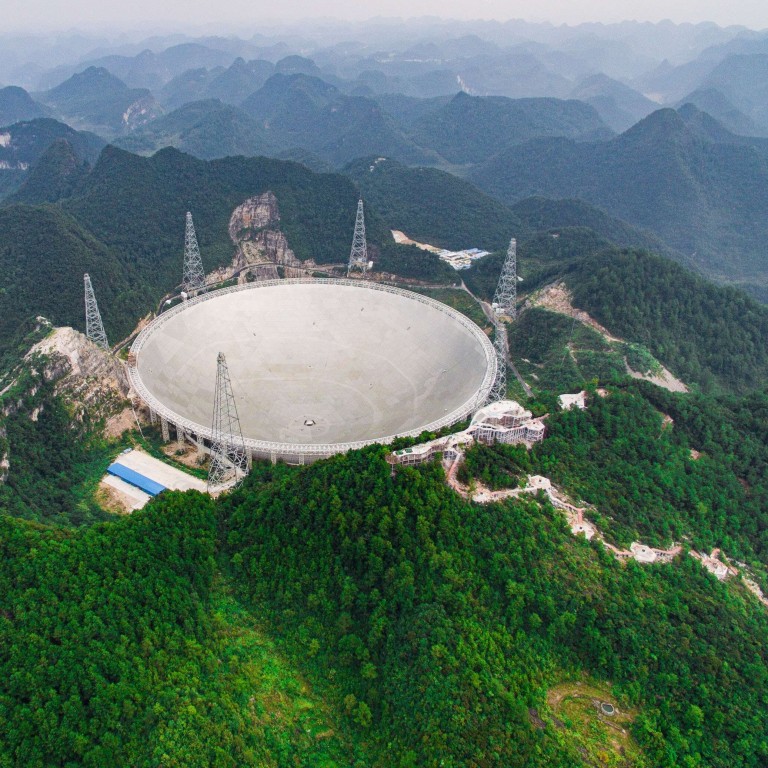
China has world’s biggest radio telescope, but is focusing on more
- Building five more giant telescopes alongside the existing Fast facility in Guizhou is among the possibilities
- Fast has no giant peer to verify its work after the ageing Arecibo’s collapse, but experts say cost and engineering complexity are factors
Professor Wu Xiangping, a researcher with the National Astronomical Observatories, said in Shanghai on Sunday that Fast had made so many important discoveries since its completion in 2016 that the Chinese government planned to expand capacity to six such telescopes in the same region.

03:54
China to open world’s largest telescope to international experts to boost scientific credentials
“It will give us a lead 50 years ahead of the world,” Wu was quoted as saying by Chinese news website Thepaper.cn.
There are some doubts over whether China could afford such an expansion. The SKA, by comparison, had a budget of nearly 2 billion euro (US$2.3 billion), split by 14 member countries, including China.
Wu Jianghua, professor of astronomy with Beijing Normal University, who was involved in planning Fast, said that telescope had cost Chinese taxpayers more than US$100 million, about the same as the average cost of 7km (4.3 miles) of high-speed railway.
“And that included investments on research and development [R&D] for new technologies,” he said. “Future telescopes will be more or less copies of the first one. They will most likely cost less.”
China has the world’s largest, most complete manufacturing capabilities and is unmatched in infrastructure construction. “Building these large telescopes can be a challenge to other countries, but this is where China’s strength lies,” Wu said.
Some critics have said that a giant telescope array in Guizhou, one of the country’s poorest provinces, would draw a lot of resources from the government’s R&D budget and reduce investments in other sectors.
But Wu said that the cost would be small relative to China’s overall investment on research facilities, which continues to increase.
Xu Renxin, professor of astronomy at Peking University and a member of the academic committee at the Fast laboratory in Beijing, said there was a debate over how the telescopes should be built.
Some researchers proposed building a large number of small telescopes instead of a few big ones. The smaller the telescope, the less of an engineering challenge it would be.
“But an array with small telescopes would require an extremely powerful computer to process the data,” Xu said.
Although the government is still reviewing the plans, the proposal for six giant telescopes has received the most support from the astronomical community, according to researchers informed about the project.
It has met a mixed response on Chinese social media, with one person saying on Weibo that such telescopes “should produce more significant discoveries than just a few papers in academic journals”.
With unprecedented sensitivity, the Fast telescope is discovering pulsars at a pace faster than all of the other telescopes in the world combined. These rotating stars could answer some important questions about the universe and also work as guiding beacons for missiles, satellites or spacecraft, scientists have said.
China is sending 3 astronauts into orbit. Who and what is now in space?
The Fast telescope has also joined Breakthrough Listen, an international effort to detect civilisations beyond Earth.
Astronomy is still a relatively new area among China’s research sectors, but it has been developing rapidly thanks to improved hardware.

